Cheer, cheer for the Banana Slugs? Earwigs? Prune Packers? California teams go nuts on sports nicknames
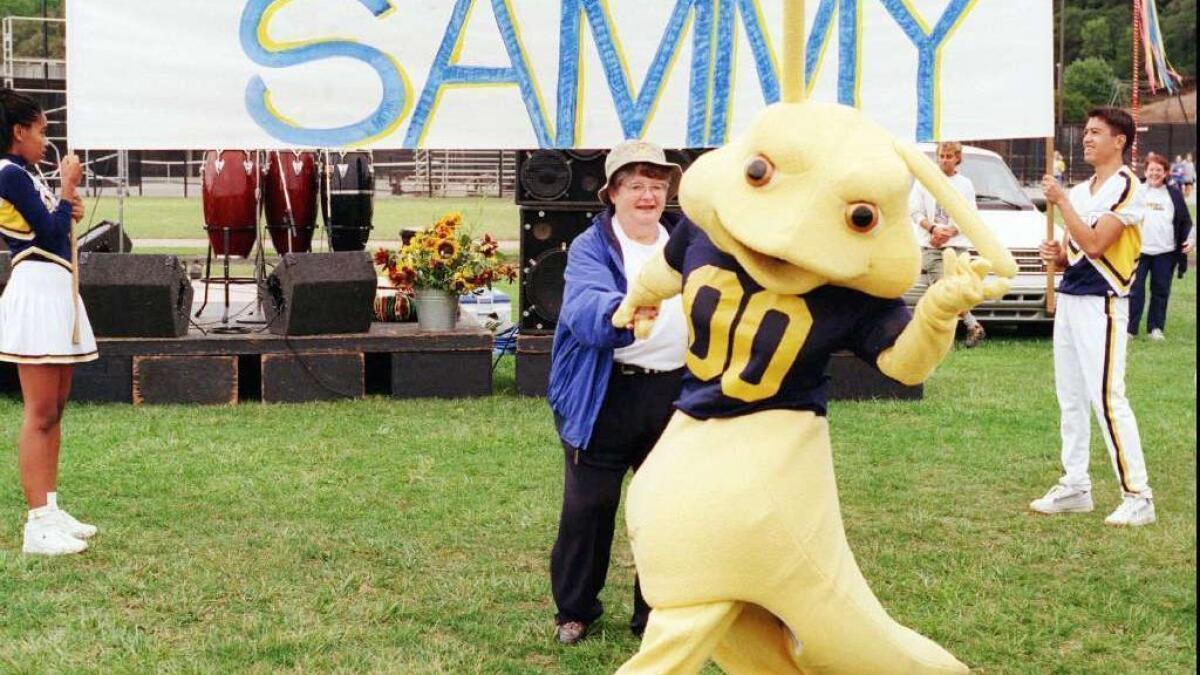
- Share via
The sign perched in front of Live Oak High looks like something you could see at any high school, with one quirk.
It doesn’t mention Lions nor Tigers nor Bears. Instead, it boasts of being “Home of the Acorns.” You know, the brown nuts that get devoured by squirrels.
However, this particular Acorn has a scowling face and is more of a yellow hue. And the athletes wear its image with pride because the kinship between Acorns seizes every corner of Morgan Hill, a town of fewer than 40,000 located south of San Jose.
“It’s all about being an Acorn,” said Michael Gemo, Live Oak’s athletic director, “when you live here in Morgan Hill.”
Up and down California, there are sports teams with unique nicknames that bestow a sense of identity on the people lucky enough to call themselves Spuds, Poets or Fighting Frogs.
The California State University system has the Northridge Matadors, Bakersfield Roadrunners and Long Beach State Dirtbags (though officially they’re the 49ers). The University of California has the Irvine Anteaters, San Diego Tritons and Santa Cruz Banana Slugs.
Los Angeles-area high schools feature the Gondoliers of Venice, Tarbabes of Compton and the Jackrabbits of Long Beach Poly.
At Live Oak, “the Angry Acorn” struts through the stands at games, weaving between fans who encourage players to “Go Nuts!”
A little more than an hour west of Morgan Hill, at UC Santa Cruz, the cry “Go Slugs!” is heard.
“Being a Banana Slug or being a Slug is revered by the student-athletes,” athletic director Sue Harriman said. “I think to be a Slug is a really special thing.”
The Banana Slugs name spiked in popularity nationally after John Travolta wore a team T-shirt in the 1994 movie “Pulp Fiction.”
Still, when Harriman first came to the university about 10 years ago, she reacted like most people who visit the campus. “A Banana Slug?” she thought. “What the heck is a Banana Slug?”
At first she believed it to be some kind of mythical creature, a California version of a minotaur or a griffin. She quickly learned that banana slugs are decomposers that eat fungus and leaves off the floor of the redwood forests that surround the campus. When it rains in Santa Cruz, they come out of the trees and crawl over the streets, sometimes shimmying up the sea lion sculpture outside the school’s Thimann Labs.
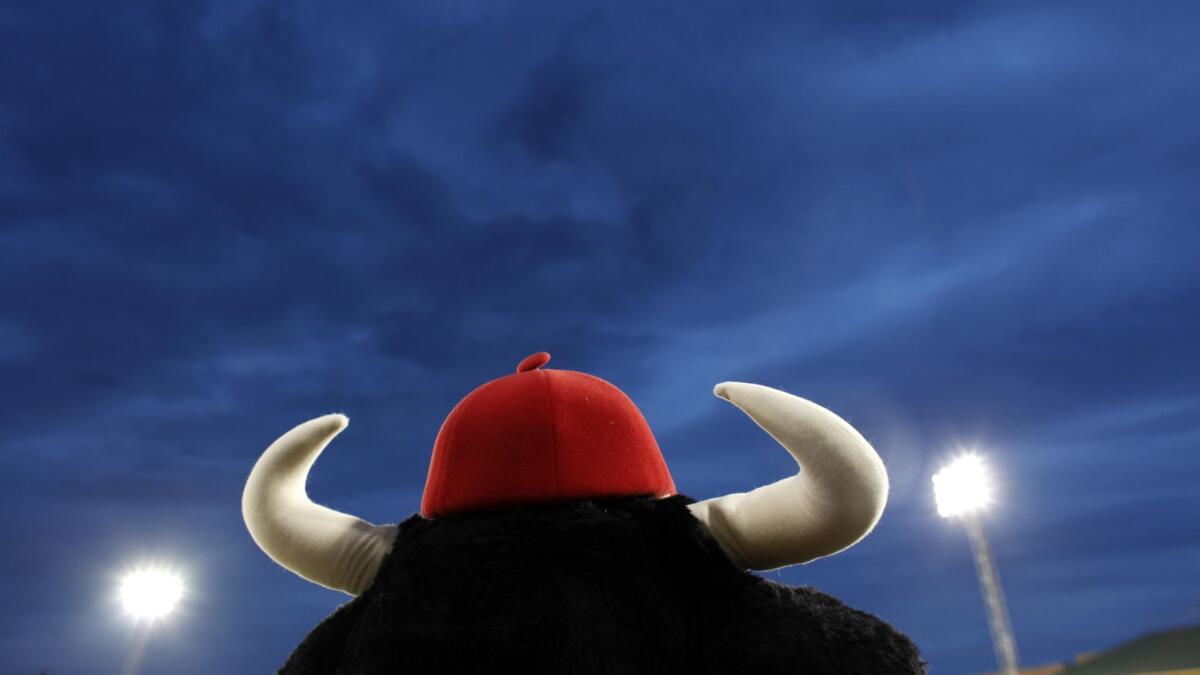
The Sea Lions were Santa Cruz’s official mascot when the school joined Division III in 1980, even as students called themselves Banana Slugs. In 1986, after five years of dealing with two mascots, students overwhelmingly voted to ditch the Sea Lions.
Since then, the Banana Slugs have been named one of the 10 best mascots in college sports by ESPN and were awarded the top spot by Reader’s Digest.
Harriman knew of the nickname when she took the job, but said she didn’t realize the power of the brand until her first week, when she and two co-workers attended an NCAA convention and wore Banana Slugs gear. People approached them in lines, in hallways, at dinner and at speeches, trying to get in a “Yo, Slugs!”
On shirts and other merchandise, the Banana Slugs slogan — “No known predators” — is sometimes accompanied by a trail of artistic slime.
Santa Cruz embraces a relatively low-key approach to athletics, which Harriman describes as a “David against Goliath” mentality. Therefore, she said, no mascot is better than the unassuming slug.
For the record: “It’s a real-life mollusk that is doing a good job in the forest,” Harriman said, “which is kind of what we’re all about.”
A tour of the state’s most unusual nicknames might go southeast from Santa Cruz to Visalia, home of the Rawhides, a minor league baseball team. Or you could keep going toward Los Angeles, where just outside the city limits you’d find the Pomona Pitzer Sagehens and the Flintridge Sacred Heart Academy Tologs. Or you could continue down the road to El Cajon, just outside San Diego, home of the Valhalla High Norsemen.
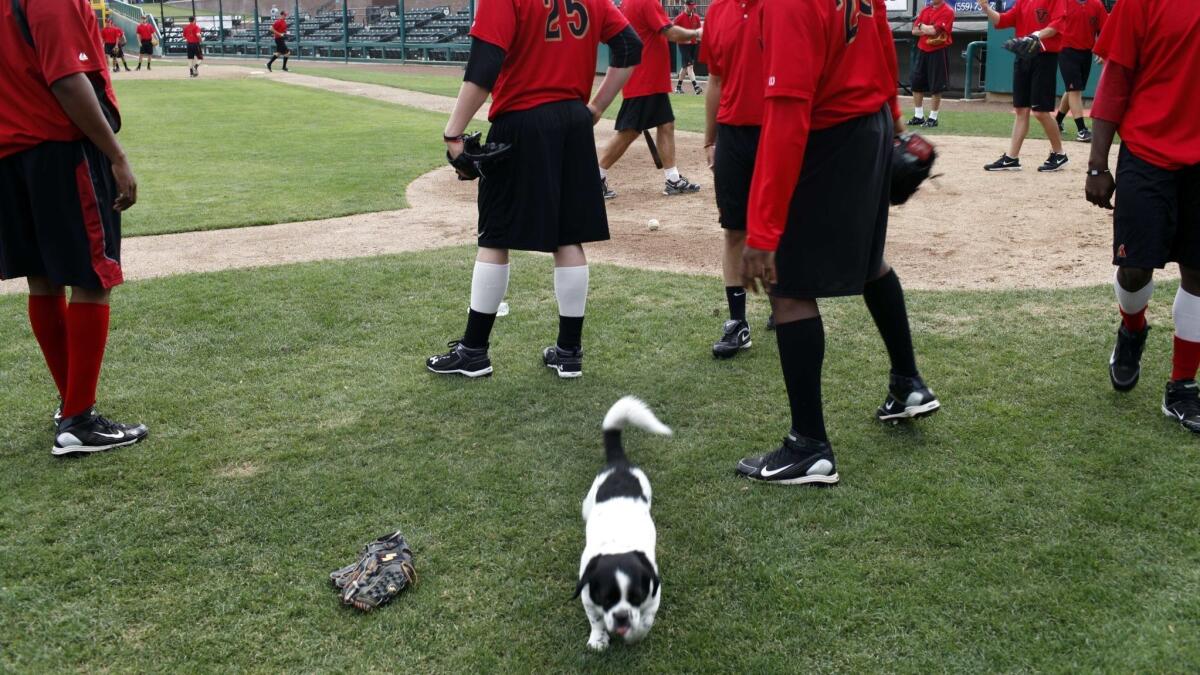
A drive north to Vallejo could lead to the California State University Maritime Academy Keelhaulers. Then you could take Interstate 680 over the Carquinez Strait to visit Concord, home of the Clayton Valley Charter School Ugly Eagles. And from there, head northwest toward Healdsburg, home to some top wineries, one McDonald’s and the Healdsburg Prune Packers college baseball summer league team.
Little-known fact: University of California slugger Andrew Vaughn, this year’s Golden Spikes Award winner as the best amateur baseball player in the nation, was a Prune Packer in 2016.
The Prune Packers name stems from the town’s history of packing prunes brought in from places such as Napa and Windsor and distributing them all over the world. Prune Packers baseball dates back to 1921 and had glory days in the 1950s. But for about a half-century, up until 2012, Healdsburg didn’t have a ballclub — until Richard Bugarske, having listened to the lore of Prune Packers baseball as told by a few octogenarians, decided he would try to revive the town’s baseball heritage.
The Prune Packers became a college summer league team, with players from across the country spending days among wooden bats and wooden bleachers and nights with volunteer host families.
Bugarske, the team president, also serves as program designer and public-address announcer.
Prune Packers games average about 150 fans, Bugarske said, although on a good day the number can swell to 400. It hasn’t been easy to lure in locals, he added, many of whom are new to the area following the post-1950s wine boom. But some do remember.
“Oh!” Bugarske sometimes hears. “My grandfather played for the Prune Packers!”
The club’s mascot, Packer Pete, closely resembles the original Mr. (Cincinnati) Red, only he wears a Prune Packers jersey. At games, the character has been portrayed by a high school baseball coach, a doctor and Bugarske’s grandson.
At the annual Prune Packers Old Timers Day, players from as far back as the late 1950s participate. “These guys come hobbling in,” Bugarske said, “but they’ve got a great spirit and they’ve got great memories. Great stories, too.”
The Prune Packer is based on an actual person. In Arcadia, there’s a school with a nickname that’s not based on a person, or any other kind of living thing: the Rio Hondo Prep Kares.
What’s a Kare? A way of life, according to Mark Carson, the academy’s director. Although students sometimes make it into something else when asked. “It’s a rare South American animal,” one might say.
The name evolved from an idea to encourage empathy and respect among the school’s athletes. Kares care. They are supposed to help opponents off the floor.
It’s also a reversal of the “typical teenage idea of, ‘I don’t care,’” Carson said. That means caring about the future, about relationships, about schoolwork and, since it’s a Christian school, about God.
“Act like a Kare,” Carson said, “on and off the field.”
Not far from Arcadia, in Pasadena, is Providence Christian College, home of the Sea Beggars. The school has Dutch Calvinist roots, so it takes its mascot name from the 16th- and 17th-century mariners who helped the Netherlands break from the Spanish empire.
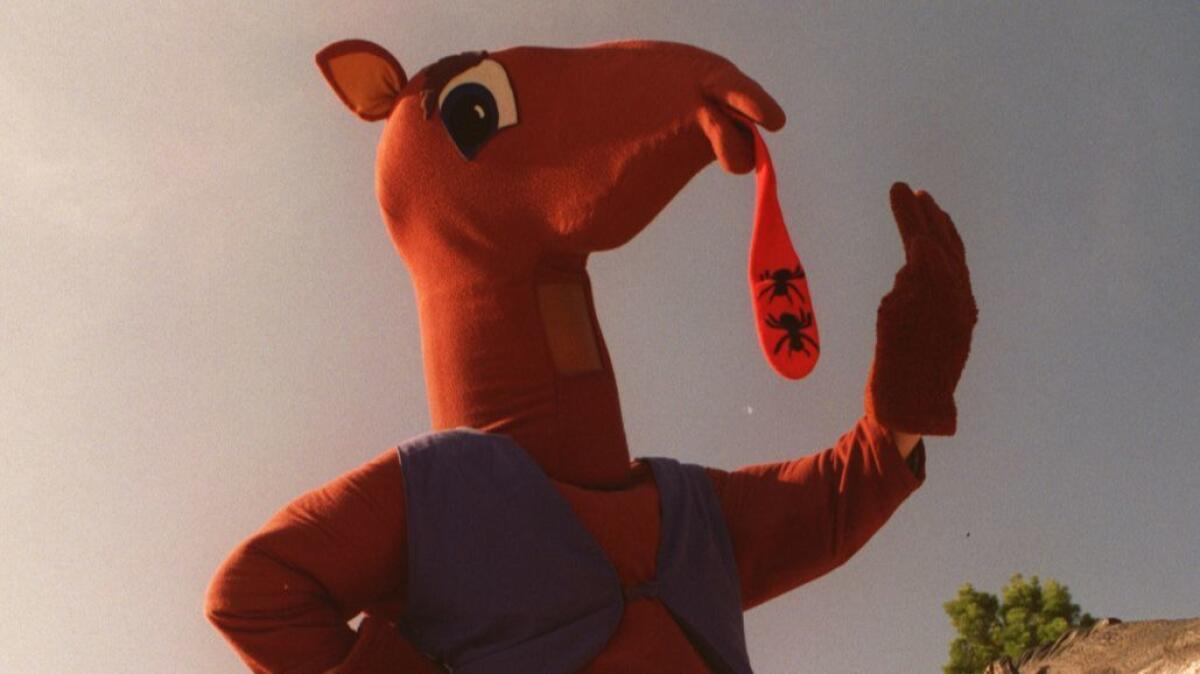
The school opened in 2005 and wrote about the nickname’s origin on its website. Its logo — a bearded, blue-and-orange, eye-patch-wearing Sea Beggar — is based on Piet Hein, a Dutch privateer who helped capture part of Spain’s “silver fleet.”
Athletic director Brian DeHaan, who has worked at schools of Trailblazers, Broncbusters, Cougars, Aztecs and Minutemen, said of the Sea Beggar: “It’s a really great conversation starter, because it ties into who we are.”
Over in Los Feliz is John Marshall High, home of the Barristers, a nickname that amounts to the John Marshall Lawyers.
Pete Arbogast, USC’s football play-by-play announcer, is a 1972 Marshall graduate and the school’s unofficial historian. He said he tried on the head of Johnny Barrister, the school mascot, and while he found it “smelly and old,” he wouldn’t want to change.
Arbogast recalled an instance when an opposing school didn’t know what a Barrister was, so it greeted the Marshall football team with a derisive “Slide down the Bannisters!”
As historian, Arbogast often fields questions about the origin of the Barristers nickname, and he has a response prepared.
“Other teams have Lions and Tigers and ferocious beasts of all manner,” he said. “But you should be very scared of us. We are the lawyers, after all.”
Some nicknames can create a controversy. While several Native American mascots in the state still exist, Coachella Valley High was pressured to change its Arabs nickname. The school went with Mighty Arabs in 2014 and altered its logo.
To offend people is one thing; to creep them out another. Which leads to a campus about 35 miles northwest of Santa Barbara, the Dunn School in Los Olivos, home of the Earwigs.
Jon Hooten, the school’s director of strategic engagement, said legend has it that when the Dunn School purchased its property in 1957 there was a dilapidated barn on the land. When the door was opened, earwigs gushed out.
“In my mind,” Hooten said, “I see this tidal wave of earwigs just flooding out of this old red barn.”
The story probably isn’t true, he said. From what he can tell, the name didn’t surface until the 1970s.
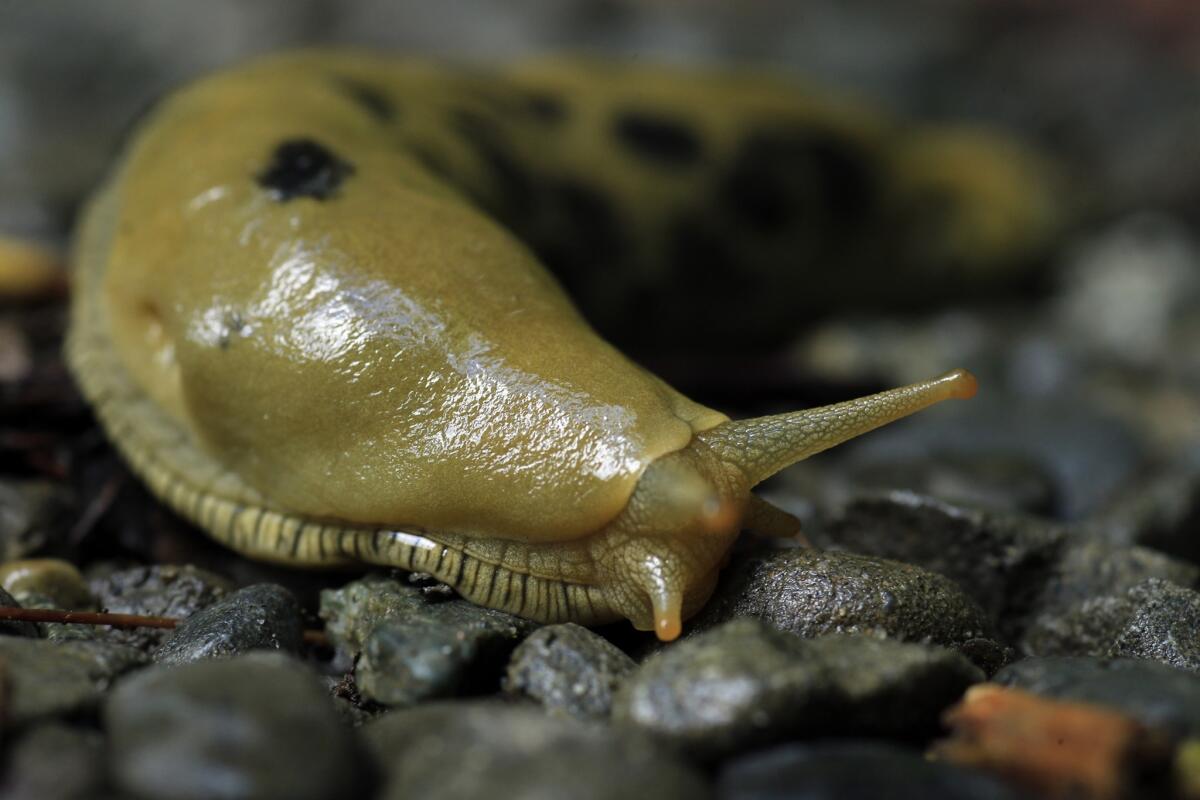
Regardless, he thinks the pincher-bearing insect is the perfect nickname for the private, 250-student middle and high school.
There is no official mascot, but students sometimes create a papier-mache Eddie the Earwig to help inspire them for big games.
There’s also #EarwigNation, a slogan slapped onto bumper stickers and T-shirts.
“Don’t ask me what an Earwig Nation is,” Hooten said, “but I guess we’re it.”
It could be worse. Hooten said the school typically hosts weekly all-student assemblies under a big oak tree, and when one of them happened to fall on April 1 he and another school official pulled a practical joke.
The other guy happened to be wearing a red sweater, so staffers cut out some black paper circles and taped them to his back before he addressed the student body.
“We’ve had a research firm come in and examine our mascot, the Earwigs,” the man said. “And my announcement today is we are changing the mascot.”
Some students were excited at the prospect of something more normal. Others lamented the idea of losing something unique. Then came the big reveal: “We’re now the Dunn Ladybugs!”
The news was met with silence for a few moments, the students no doubt wondering how they could have gone from Earwigs to something worse. Finally everyone realized it was a joke.
“Some people love it, some people hate it,” said Hooten, who might have been speaking on behalf of Earwigs, Acorns, Barristers, Sea Beggars, Prune Packers and Banana Slugs everywhere, “but it’s part of who we are.”
More to Read
Go beyond the scoreboard
Get the latest on L.A.'s teams in the daily Sports Report newsletter.
You may occasionally receive promotional content from the Los Angeles Times.










